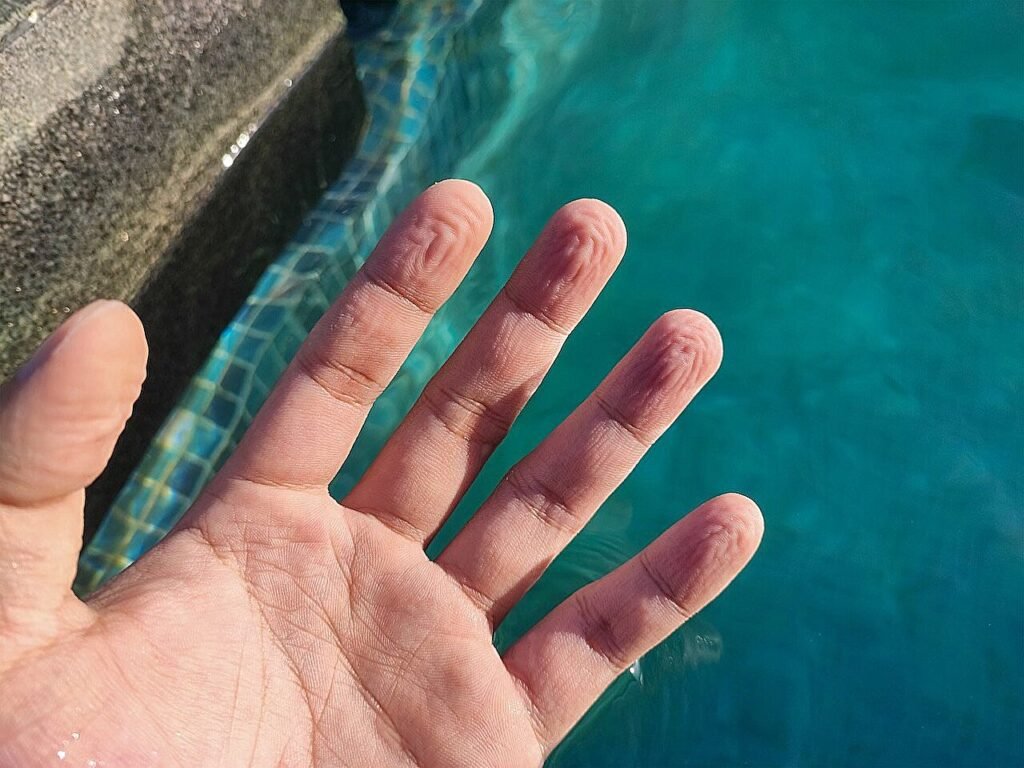Swimming season is in full swing, and as you take a dip in the pool or ocean, you may notice your fingers wrinkling after spending time in the water. Those familiar wrinkles are actually caused by blood vessels contracting under the skin, not from skin swelling as previously believed. This discovery, made by researchers at Binghamton University, State University of New York, could have valuable applications for crime investigators.
Led by Guy German, the team at SUNY’s Biological Soft Matter Mechanics Laboratory delved into the science behind wrinkled fingers. Building on previous research conducted in 2023, German and his team discovered that the wrinkles form in the same manner with every dip in the water. This revelation came about when a student posed the question of whether the wrinkles always form in the same way, prompting further investigation.
In a study published in the Journal of the Mechanical Behavior of Biomedical Materials, German and graduate student Rachel Laytin conducted experiments where participants soaked their fingers in water for 30 minutes. They then photographed the wrinkles and repeated the test at least 24 hours later, finding consistent patterns of raised loops and ridges each time.
One unexpected finding was that individuals with median nerve damage in their fingers did not develop wrinkles when soaked in water. This observation opens up new possibilities for utilizing this research in forensics, particularly in fingerprinting and identification of bodies after water exposure. German, whose father was a former police officer, understands the importance of such applications in real-world scenarios.
As the team continues to explore the science of skin, German expresses his enthusiasm for the wealth of knowledge yet to be uncovered in this field. With a background in biomedical engineering and a passion for biometrics, he is driven to unravel the mysteries of skin behavior and its implications in various fields.
This groundbreaking research sheds light on a common phenomenon and its potential implications beyond just wrinkly fingers. By understanding the underlying mechanisms, researchers can apply this knowledge to practical uses, such as forensic investigations and biometric identification. The quest for knowledge in skin science continues, fueled by the curiosity and dedication of scientists like Guy German and his team at Binghamton University.
As we dive deeper into the mysteries of the human body, discoveries like these remind us of the intricate mechanisms at play beneath the surface. With each study, we uncover new layers of understanding that not only enrich our scientific knowledge but also have practical implications in our daily lives. As we marvel at the complexities of the human body, researchers like Guy German pave the way for a deeper appreciation of the wonders that lie within.


